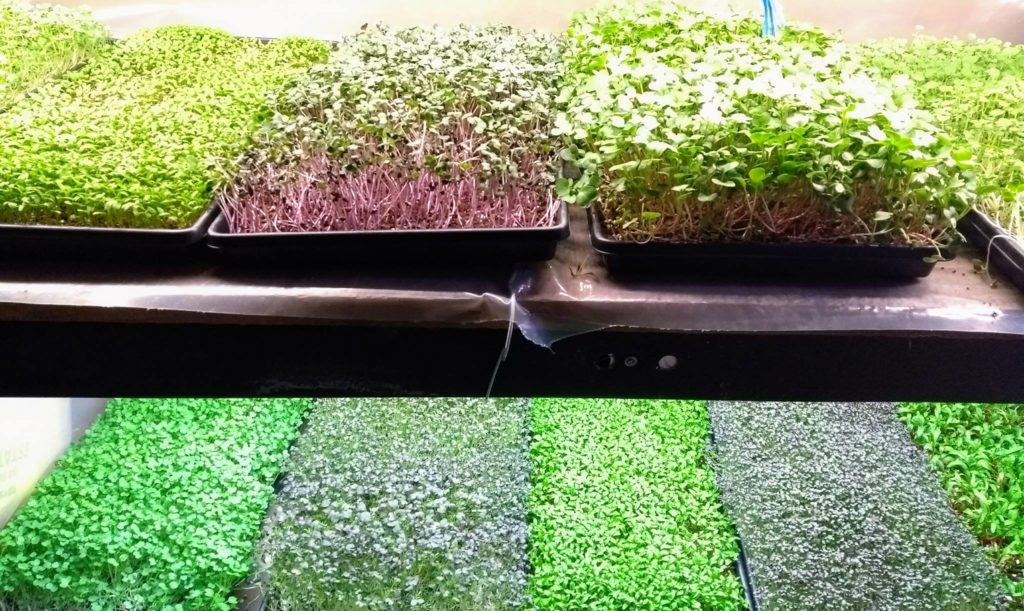For most of us, potassium is an important mineral nutrient that we need for health and is found in many foods, including fruits and vegetables. However, for people who have kidney disease, doctors recommend a low potassium diet. The recommended amount of potassium for an adult is around 4.7 grams/day, while low potassium diets are around 1.5 grams/day. This is because while a person with healthy kidneys is able to process potassium well at the recommended amount, someone with kidney disease would have trouble and could put their health in danger. Low potassium diets, unfortunately, are often deficient in vegetables, and for good reason. However, skipping the vegetables means that kidney disease patients are missing out on many other vitamins, minerals, and antioxidants provided by vegetables. Microgreens, an emerging raw salad crop, may be able to help.
Researchers at University of Bari Aldo Moro in Bari, Italy decided to try growing microgreens in a low-potassium hydroponic nutrient solution to see if they could reliably produce low-potassium microgreens. Plants get their nutrients, particularly minerals like potassium, from the medium they are grown in, first to serve the plant’s needs while it lives and then as nutrition for the humans who eat it. Microgreens are the immature shoot of any edible plant, harvested just 1-3 weeks after planting. Microgreens are a clever choice for this study. Because they grow so quickly, and typically in highly controlled settings such as indoor, hydroponic operations, their growing conditions can be easily adjusted to produce certain colors or nutrient profiles. Though there is not enough research yet to be certain, there are some claims that microgreens are, pound for pound, more nutritious than their mature vegetable counterparts.
In this study, researchers grew chicory and lettuce microgreens in three different hydroponic solutions – one with no potassium, one with a moderate amount, and one with a higher amount of potassium. Since microgreens do need some potassium to grow, the challenge is to find the minimum amount of potassium needed for growth that doesn’t result in a vegetable that is too high in potassium for the kidney patient. It is likely, though not yet demonstrated, that this method would not be ideal for mature vegetables, as their yield would be affected much more dramatically by potassium deficient growing media.
Researchers found that yields were lower for microgreens grown without any potassium, but otherwise the microgreens grown at all potassium levels were of similar height, color, and quality. Using this low potassium growing method did result in microgreens with around 50% lower potassium levels than those same varieties grown in full strength hydroponic solution. Fortunately, reducing potassium did not seem to alter the content of other nutrients in any consistent way, leading to the assumption that these microgreens may be a nutritious option for patients on diets that otherwise restrict vegetables.
The authors also point out that this low-potassium growing method is easy to implement as it does not require hydroponic producers to buy any additional supplies or equipment or obtain any special training. Marketing the product appears to be straightforward as the 50% reduction in potassium levels means that it would qualify for labeling as a “reduced potassium food.” Overall, it looks like it could be a win-win for growers who want to diversify their crops and for customers who want nutritious foods that are also kind to the kidneys.


